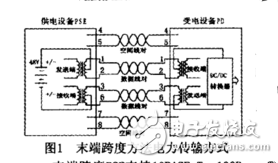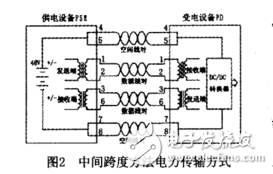Power Over Ethernet (POE) is a technology that provides power through the dual lines of common voice, data, and video. Power over Ethernet technology guarantees the transmission of data signals to IP terminals based on existing Ethernet cabling, while providing DC power for such devices. Universal Ethernet cable by means of simultaneous transmission of Ethernet signals and DC power, the power and data integrated in - - the cable system which, in conventional structured cabling ensure safety while ensuring the normal operation of the network. Power over Ethernet uses the IEEE802.3af standard, and 802.3af breaks through the Ethernet application. It is primarily a power transfer protocol, not a data protocol.
Second, the structure and principle of Ethernet power supply system2.1 POE system composition. A complete POE system consists of a power supply device and a power receiving device in a POE system. The power supply device (PSE, Power Sourcing Equipment) is responsible for injecting power into the Ethernet line and implementing power planning and Management, and the use of power is called "Power Device" (PD).
Power over Ethernet begins with a powered device that provides power, and the device detects the device that needs to be powered by measuring its common mode terminal. An effective powered device must have a "detection feature" of a 25k9 common mode resistance. PSE uses a second measurement to determine the peak power requirement of the PD. After mastering this information, the PSE can supply power to devices that need to be powered without damaging the devices that do not need to be powered. Effectively allocate available power.
2.2 POE power transmission mode. The 802.3af standard defines two different types of PSEi, the "Endpoint PSE", the end-span PSE, which integrates the power supply function with the network switch. EndpointPSE is an Ethernet switch, router or other network switching device that supports POE. The end span device simultaneously accesses power and data on cables 1, 2, 3, and 6 in the twisted pair, as shown in Figure 1.

The end span PSE supports 10BASE-T.100BASE TX and 1000BASE-T networks. The PSE in the end-span POE system can provide a nominal 48V DC power supply between signal line pairs or between alternate pairs.
The Midspan PSE is a dedicated mid-span PSE, and the other is "MidspanPSE" is a dedicated power management device, usually placed with the switch. It has two RJ45 interfaces for each port, one connected to the switch with a short wire and the other connected to the remote device. PDs come in many forms, such as IP phones, AP.PDAs or mobile phone chargers.
The mid-span PSE is between the switch and the PD. It does not use the 4, 5, 7, and 8 cables in the dual line to provide power. The data is routed through the intermediate span device without any changes. The intermediate span PSE is usually installed in the equipment rack adjacent to the Ethernet switch, as shown in Figure 2.

The empty segment pair mid-span PSE only supports 10BASE-T and 100BASE-TX networks, while the 802.3af standard does not currently define support for 1000BASE T networks. The mid-span PSE provides 48V DC power between the alternate pairs.
Photo Studio Kit,Photography Lighting Kit,Photography Studio Kit,Photography Studio Lighting Kit
SHAOXING SHANGYU FEIXIANG PHOTOGRAPHIC CO.,LTD , https://www.flying-photography.com